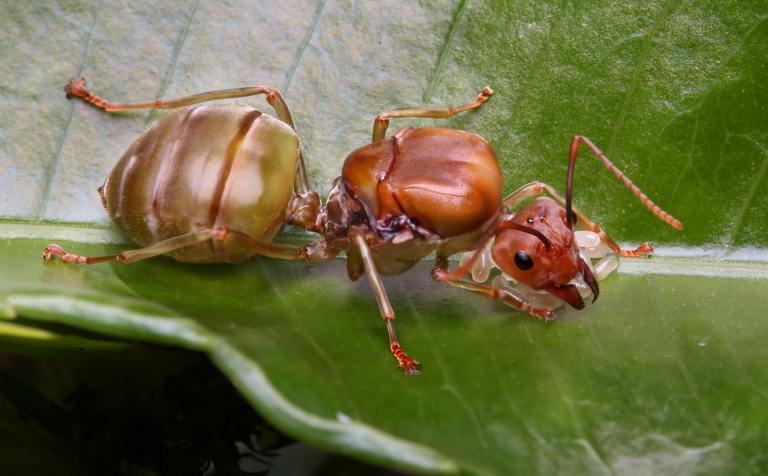Queen Ant: Why She’s Key to the Colony’s Survival
Published: November 18, 2024

Introduction
In the intricate world of ant colonies, the queen ant is not just another member—she is the foundation upon which the entire colony is built. Her role is multifaceted, involving reproduction, communication, and the maintenance of social order. With the latest entomological research shedding light on the queen ant’s exceptional longevity and pivotal importance, understanding her functions gives us deeper insights into these complex insect societies—and why dealing with them effectively often requires professional support.
The Role of the Queen Ant
At the core of every ant colony lies its queen. The queen ant’s primary responsibility is reproduction. She lays all the eggs that populate the colony with workers, soldiers, and future reproductive ants (new queens and males). Unlike the sterile female worker ants, the queen possesses fully developed reproductive organs, enabling her to produce thousands of eggs throughout her life.
New studies from institutions like the University of Florida have uncovered that ant queens manage to defy typical biological trade-offs between fertility and longevity. These findings underscore how crucial and uniquely adapted they truly are.

Identifying Features of the Queen Ant
To understand how to manage ant infestations effectively, it's helpful to recognize the queen ant. She can be identified by several key features:
- Size: Queen ants are significantly larger than their worker counterparts.
- Wings: Young queens have wings for their nuptial flights. Once mated, they shed these wings permanently.
- Thorax: A pronounced thorax differentiates the queen from others, reflecting her need for powerful wing muscles.
- Coloration: Queens may exhibit distinctive coloration, often richer or darker than workers, varying by species.
Spotting a queen ant near your property can signal the early stages of colony formation—a critical window for intervention.
Behaviors and Lifecycle of a Queen Ant
Nuptial Flight and Mating Rituals
Among the most fascinating behaviors of a queen ant is the nuptial flight. During specific environmental conditions—often warm, humid days following rain—virgin queens and males take to the skies. This event ensures genetic diversity and allows for new colony formation.
Post-mating, the males die, and the fertilized queen ant begins a new chapter—founding a colony entirely on her own. This strategy highlights both her independence and the self-sufficiency that defines early colony life.
Colony Founding and Early Stages
After landing, the queen ant sheds her wings and searches for a suitable nesting site. She then uses her stored energy to lay her first batch of eggs. During this time, she does not eat, relying entirely on her reserves. Once the first generation of workers hatches, they take over foraging and nest maintenance, allowing the queen to focus solely on reproduction.
Egg Laying and Daily Duties
Once the colony is established, the queen’s routine revolves around continuous egg-laying. Depending on species and environmental conditions, a mature queen ant can lay hundreds to thousands of eggs per day. This fertility is critical to colony growth and function.
Chemical Communication
One of the most remarkable features of the queen ant is her ability to emit pheromones that regulate colony behavior. These chemical signals control the roles of workers, prevent other females from reproducing, and help maintain overall order. Researchers such as Dr. Walter Tschinkel at Florida State University have extensively studied these dynamics, further highlighting the queen’s central role.

The Queen Ant and Colony Success
The success and longevity of an ant colony are directly tied to the queen ant. Here’s how:
1. Sustained Population Growth
A healthy queen ensures a steady supply of workers and soldiers, enabling the colony to expand and protect its resources. If the queen dies or becomes unproductive, the colony typically collapses.
2. Genetic Resilience
Through mating with multiple males during her nuptial flight—a behavior known as polyandry—the queen ant increases the colony’s genetic diversity. This diversity makes the colony more adaptable and resistant to disease and environmental stress.
3. Pheromonal Governance
The queen's pheromones are essential for maintaining structure and suppressing rebellion. Without this chemical control, worker ants might attempt to reproduce, leading to disorder and inefficiency.
4. Longevity and Stability
The queen ant often lives for years, sometimes even decades, providing long-term leadership. According to findings shared by the University of Georgia, this long lifespan allows colonies to remain stable and productive over extended periods—an impressive feat in the insect world.
Subheading: Why the Queen Ant Matters to Homeowners
Understanding the queen ant is not just academic—it has practical implications for homeowners and property managers. The queen’s presence determines whether an ant problem is a fleeting nuisance or the beginning of a persistent infestation. Colonies can relocate, expand, and adapt, but they always depend on their queen. Effective treatment strategies must consider this, as merely eliminating visible workers won’t address the root of the problem.
Early intervention and comprehensive colony control, guided by professional expertise, can be crucial in preventing long-term issues. Identifying and targeting the queen ant is the key to resolving infestations at their source.

Conclusion
The queen ant is far more than just a reproductive unit—she is the architect, governor, and life-giver of the colony. Her behaviors, biological adaptations, and influence over her nestmates illustrate an extraordinary level of complexity and efficiency. As science continues to uncover the secrets behind her longevity and role, one thing is clear: understanding the queen is central to understanding ants themselves.
For those dealing with ant problems around their homes, recognizing the importance of the queen ant is the first step toward effective control. Taking action early can make all the difference between a manageable issue and a major infestation. If you’re seeing signs of ant activity, especially near your foundation or kitchen, it might be time to take a closer look—and consider your options carefully.